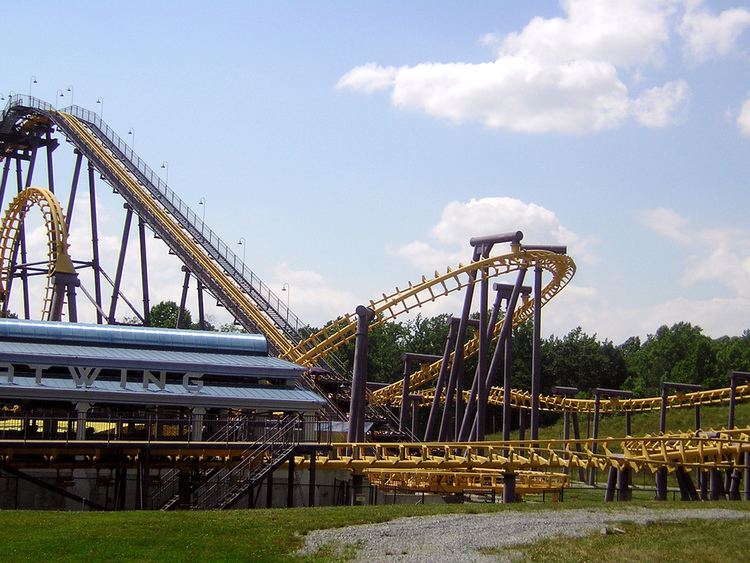Park section Gotham City Opening date June 16, 2001 Height 35 m G-force 4.3 g | Status Operating Max speed 80 km/h | |
 | ||
Address 13710 Central Ave, Upper Marlboro, MD 20774, USA Similar The Joker's Jinx, The Wild One, Mind Eraser, Superman – Ride of Steel, Roar | ||
Batwing is a steel flying roller coaster built by Vekoma at Six Flags America in Prince George's County, Maryland. Except for the paint scheme, this ride is identical in layout to Firehawk, another Vekoma Flying Dutchman, located at Kings Island. Both rides are nearly identical to Nighthawk at Carowinds, however that ride has a slightly different ending.
Contents
Of the three Vekoma Flying Dutchmans, Batwing is the only one still operating under its original name at its original park, since Firehawk used to operate at Geauga Lake as X-Flight and Nighthawk originally operated at California's Great America as Stealth. Batwing is closed for the rest of the 2016 season during Holiday in the Park because it cannot run under cold conditions.
Track
The steel track is approximately 3,340 feet (1,020 m) in length and the height of the lift is approximately 115 feet (35 m).
Batwing has a total of five inversions. It features one vertical loop, two inline twists, two "Lie to Fly" and two "Fly to Lie" elements. Each "Lie to Fly" and "Fly to Lie" element is counted as a half inversion. A "Lie to Fly" element is when riders are on their backs, facing the sky and they are flipped and face the ground. A "Fly to Lie" element is the opposite.
Layout
Once riders are seated and restrained, the train tilts backwards into a 'lay-down' position and dispatches. The train travels backwards out of the station, turns left and travels up the 115-foot (35 m) lift hill at a 33 degree angle. Once the train reaches the top of the lift hill, it dips down into a twist (called a "Lie-to-Fly") that turns the trains upside down into a flying position where riders face the ground. After the twist, the train travels down the first drop, reaching speeds of 51 mph (82 km/h). Riders then go through an over banked Horseshoe Curve element. Following the Horseshoe, the train enters a "Fly-to-Lie" element that turns riders back to a lay-down position. After the banked turn, the ride enters the 66-foot (20 m) tall vertical loop, where riders experience 4.3 G's. The train then goes into another "Lie-to-Fly" element. Following the loop, riders go through another turn and then hit two consecutive inline twists. Following the inline twists, the train enters the final helix. After the helix, riders hit the final "Fly-to-Lie" element and the train is slowed down on the brake run.
Trains
Batwing currently operates with two trains. Each train has six cars that have four seats in a single row for a total of 24 riders. It originally operated with three trains but was reduced to two in 2007. Riders are secured by a vest over the chest and a lap bar.
